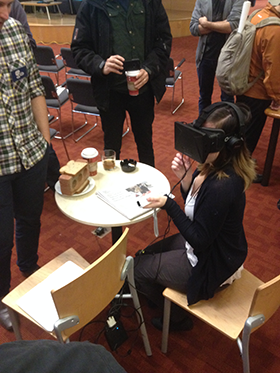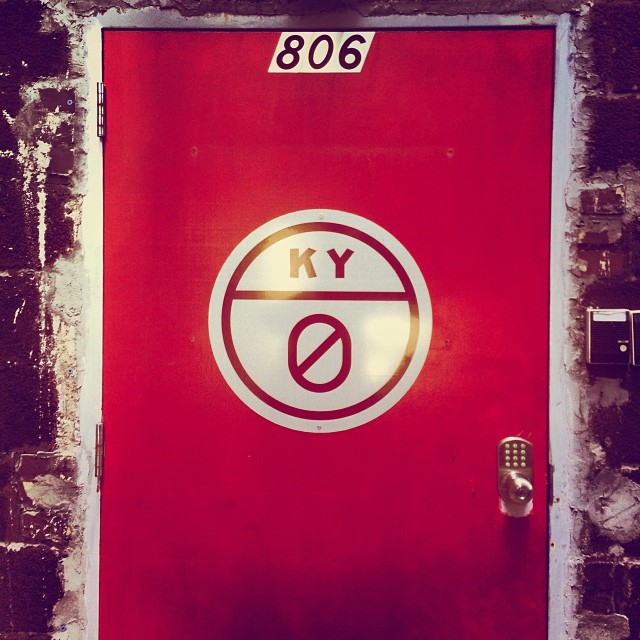Howdy! This is the private newsletter for Kentucky Route Zero. We've been pretty head-down at work on Act III lately, but wanted to check in with y'all a bit about our release schedule and other things we've been up to.
Our release schedule
Act III is getting close, and we're excited to share it with you. We've been avoiding announcing release dates in public, but at this point we're going down the checklist of remaining content and the end is in sight. We appreciate your patience & support, since we know this is taking some time and we know that in videogames at large there's often more clear communication about release dates (though of course delays are common). We're always putting in long hours on this project, and we hope we've demonstrated that you can trust the time goes to making the rest of the game really special.
That said, we've also been a bit remiss on this newsletter and communication in general. Being such a small studio and having a relatively niche audience (you!) is a great opportunity to share our process without having to worry about PR/publishing stuff. We have some plans for that in the coming months (after Act III), and also please always know that you can reach us at cardboardcomputer@gmail.com with any questions or comments, etc. We try to respond pretty quickly on that email account.
The Entertainment
A few weeks ago we released "The Entertainment," another interlude piece in the vein of "Limits & Demonstrations." Both are free downloads that connect narratively with KRZ and form oddly-shaped bridges between acts.
You can download "The Entertainment" here (for Mac, Windows & Linux, with optional Oculus Rift integration):
http://kentuckyroutezero.com/the-entertainment/
Some deconstruction of the game follows, so download & play it first if you're spoiler-averse!
We concepted "The Entertainment" as a one-act play inspired by the work of a few modern-era playwrights: Eugene O'Neill, Samuel Beckett, and Maxim Gorky. These are folks who's work we've been looking at in general while developing KRZ, but here we wanted to kind of zoom in on this form in the same way we focused on installation art in "Limits & Demonstrations." We also knew we wanted to play a bit with the Oculus Rift, which influenced our design thinking on this project from the beginning.
Designing for the Rift (a head-mounted VR display) introduced some distinct constraints into our process. Most importantly, it gives the player direct control of the camera by allowing them to turn and tilt their head -- very different from the rest of KRZ in which we exercise fairly strict control over camera motion. It's also most effective rendering convincing depth at close range -- most of KRZ happens with the camera at a great distance from the characters and setting, even if we cheat that perspective a bit by playing with the camera's field of view.
So we had the constraint of making a first-person game with the most detailed action within a few meters reach. Even putting the player's perspective in the theater's audience would be at a great enough distance as to waste some of the stereoscopic effect of the Rift. We came up with the solution of putting the player on-stage as an actor. After experimenting with dialog choice-making mechanics in this view and not coming up with anything that felt quite right, we moved forward with the plan that the player-character had no lines (giving us a chance to draw a bit from Beckett's modernist pantomimes), and that the only verb available to the player would be "look," an idea we'd already been excited about that takes on more detail and potency with the head-tracking function of the rift.
The Rift also lends itself to a public gallery or installation type of display, mostly because it's fun to watch people wiggle their heads around wearing this weird high-tech mask. By happy chance, our friends at the Hand Eye Society in Toronto invited us to a festival they organized at the Toronto Reference Library, called WordPlay, "a free one-day festival to celebrate the most interesting writerly games." So we debuted "The Entertainment" at a public library in Toronto. Jim Munroe was extremely generous with his time and energy, and re-assembled the scene from the game out of scavenged props. Here's what it looked like:


At WordPlay, we had some space to reflect on what KRZ and "The Entertainment" might mean as "writerly games." Unlike many of the games celebrated there as being particuarly writing-driven -- text adventures, Twine games, experimental corners of the "visual novel" genre -- KRZ is really fundamentally about text *and* image *and* audio *and* motion *and* interaction. We've always liked that about videogames -- each game is a different messy intersection of forms and constraints. The writing component in "The Entertainment" was constrained by its reference to these other playwrights we've mentioned, but also formally by its presentation in the game: the dialog box is big enough to fit two lines of about 22 letters each, and the player can switch between conversations at any time by turning their head. Switching back to Act III, the linearity and context of KRZ's larger dialog box feels liberating, even as the absence of multiple-choice dialog options gave the writing process in "The Entertainment" it's own new kind of freedom.
Other news
- We won two awards at Indiecade 2013! "Visual Design" and "Story/World Design."
- We did a really fun Q+A session at the Wordplay festival, hosted by Miguel Sternberg. That should be online soon; we'll post a link on our
Twitter
/
Facebook
when it appears.
- Ben uploaded the "Letter Full of Promises" track from "The Entertainment":
http://benbabbitt.bandcamp.com/releases
- We moved into an office! It's behind a creepy red door at the end of an alley, which looks like this:

Thanks & more soon!
- Jake & Tamas & Ben